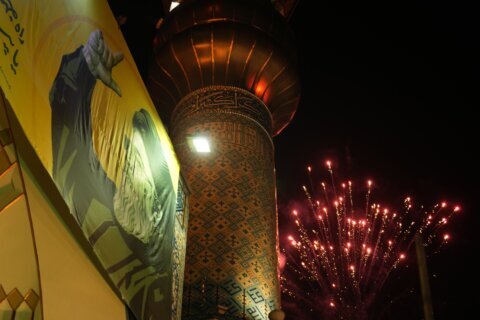WASHINGTON — For decades U.S. intelligence and law enforcement authorities have warned that a terrorist would eventually try to detonate a suicide device in a crowded U.S. city.
It happened in New York’s Port Authority transit terminal at approximately 7:20 a.m. Monday.
Akayed Ullah, 27, of Brooklyn, who officials believe has been in the U.S. since 2010, allegedly detonated what authorities called a “low tech” device in an underground tunnel that connects the busiest bus terminal in the world to New York’s Times Square.
The bomb fizzled out.
Ullah was injured, but survived, and three people around him suffered relatively minor injuries.
But the message was loud and clear: Big cities in the U.S. are still prime targets for suicide bombers.
The Sept. 11, 2001 attacks were a major terrorist-inspired, suicide operation. But since then, and after dozens of terrorist plots and attacks, nothing of that scale has taken place in the U.S.
This is the first time a suicide bomber, with a device strapped to his body, has carried out an attack in a major U.S. city, but not the first attempt in the U.S.
There was one such attempt in 2005. But the circumstances, national awareness and the terrorist landscape back then were very different.
Twelve years ago, al-Qaida was on the run, ISIS did not exist and neither did it’s formidable, global internet-based recruiting and communications system.
On Oct. 1, 2005, at 7:30 p.m., in Norman, Oklahoma, “Joel Henry Hinrichs III, a Muslim convert who actually tried to get into a University of Oklahoma football game. Unable to enter, he walked out and the device detonated on a park bench,” said Fred Burton, vice president of intelligence at Stratfor, which investigated the event.
Hinrichs, who suffered from depression according to relatives, killed only himself — possibly accidentally when his bomb made with volatile TATP exploded.
It’s not yet clear what Ullah’s pipe bomb was made of, but roaming through an enclosed, highly trafficked pedestrian transit hub in New York, could have been a disaster, and serves as an ominous warning, according to Burton.
“A potential suicide device as a bombing mechanism to me is troubling. I think that’s going to raise all kinds of concerns for departments saddled with trying to protect public transportation systems from subways to buses,” said Burton.
Another concern is that Ullah’s plot diverges from recent terror trends and further confuses an already complicated terrorism environment.
“If this was truly intended as a suicide attack, based on fact that the IED was strapped to the suspect’s body, then this runs counter to the most recent terrorist propaganda efforts calling for operatives to survive the attack and live to carry out future operations,” said Mike Maness, director of TrapWire, a global threat detection firm.
Ullah, according to authorities, may have had some contact with ISIS and was a part of the group’s attempts to launch attacks during the holidays.
“NYC is clearly on the ‘X,’ as are D.C., Las Vegas and some other sites across the country,” Maness said.
Maness said those locations are not just temporary fixations.
“Once you’re on the terror target list, you remain a target forever. Our adversaries are patient; they will choose the time and place for an attack, fully realizing that it is impossible for us to maintain a heightened state of readiness for very long,” said Maness.
Law enforcement sources from several large cities have expressed concerns that a wave of copycat suicide attacks, similar to the recent surge of vehicle attacks, could be coming.
Some experts are not convinced the New York Port Authority suicide attack will be the only attempt during the holiday season.







